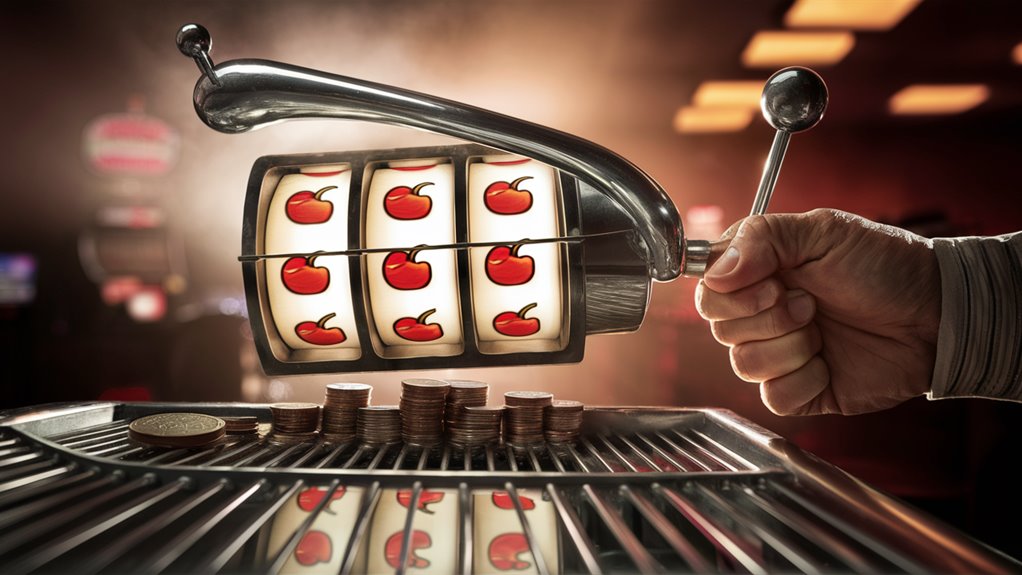
Why We Risk: The Brain and Gambling

Why Our Brain Likes to Gamble
Our brain finds joy when we gamble or take big risks. As we gamble, brain paths set free dopamine, a key brain feel-good drug. This happens when we win but also when we almost win. This drug makes us feel top, like when we win for real.
The Pull of Random Wins
Random wins keep us wanting to gamble more. When wins come at no set time, they tie stronger brain links than wins that happen all the time. This makes it hard for folks to stop gambling even when they lose big.
Seeing Losses vs. Gains
Prospect theory shows we feel losses way more than wins. This leads to loss chasing, where gamblers bet more after a loss, to try to get back what they lost. The sharp pain from losses pushes us to make choices without much thought.
Society’s Role
Culture and social habits shape our gambling ways. The gambling scene uses almost-wins and smart ads to keep us playing. Our friends, ads, and what’s normal around us keep us gambling.
Knowing and Breaking Free
Learning these mind tricks helps us fight bad gambling habits. If we know how our brain sees risks and rewards, and see how gambles hook us, we can make smart choices and get better habits.
How Our Brain Loves Rewards
The Joy of Feeling Good
When we feel good, our brain’s reward spot turns on. It works with many brain links and chemicals.
Dopamine, a top brain chemical, makes us feel high and happy. This happens when we get what we want, but also when we might. This is why we keep going for wins, even if we lose.
Handling Happiness
Our nucleus accumbens, the joy center of the brain, is key to liking rewards.
It works with the mesolimbic pathway, helping with real things like food and Paper Lantern more. Studies show if we like rewards a lot, we may react stronger to small signs of a win and not as much to other stuff.
Almost Wins: What Goes on
Our brain gets cool when we almost win, making us feel like we did.
This, along with random reward times, builds strong brain patterns. This shows why some actions stick even if we often lose. The brain reacts to almost wins and thinks a win might come soon.
Can’t Stop Thinking About Almost Wins
What Happens in the Brain
Near misses light up the same brain spots as wins. It makes us feel like we almost won.
In gambling, the brain thinks a near win, like just missing three same items, means a win soon.
Learning from Close Calls
Our brain sees near wins as learning chances, not fails.
When we almost win, our brain thinks we’re close to a win. This idea keeps us trying, even when we lose again and again.
Games Trick Us on Purpose
Game makers put near wins in games to hook us.
This kind of design plays on how we learn, making near wins pull us more than full losses. The feel of almost winning keeps us in the game, losing over and over.
- How rewards fire up our brain
- How we see patterns
- How we react to learning signs
- How some moves become habits
Trying to Win Back What We Lost in Gambling

The Bad Loop of Running After Losses
Chasing losses is risky in gambling. It’s about taking bigger risks from a deep need to fix past losses.
This loop changes our choices, as emotions lead over clear thinking.
Prospect theory tells us we feel losses harder than gains, keeping the gambling up.
Dangers and Signs
The risks of chasing losses show in many ways:
- Bigger bets
- No set bet limits
- High-risk moves
- Quick choices
This makes the brain’s reward system run by avoiding pain rather than seeking joy, pushing risky bets.
What’s Happening in Our Heads and Signs of Gambling Issues
Chasing losses is a big sign of gambling trouble, with lots of study proof. Big brain changes include:
- Less urge control
- Poor risk checks
- Poor choices
- Changes in how the brain sees rewards
This cycle goes on as each try to fix past losses often makes things worse, making a tough addiction cycle.
How Our Area and Who We’re With Touch Gambling
Culture and Social Scene
How society sees gambling and what’s normal around us shapes our gambling ways.
In spots like Macau and Las Vegas where gambling is big, it’s a key part of life.
Where gambling is normal, it shapes how locals view risks and how often they gamble.
Friends, Family, and Ads Play a Part
Friends and family are big in our gambling habits.
Seeing our friends gamble makes us more likely to gamble too.
Ads and media views on gambling also hit big, especially on young folks.
Beliefs and Money Situations
What we believe about luck and signs affects our gambling ways.
Different money levels in places lead to different gamble methods, seen as fun or a way to make cash. These create unique views on risk and how deep folks go into gambling.
- Asian markets: Focus on luck and signs
- Western spots: See gambling as fun and social
- New markets: Online betting is growing
- Old-school places: Stick to traditions and events
Stopping Problem Gambling
Getting Triggers of Gambling
Social and cultural factors really 먹튀검증업체순위 shape our gamble habits.
Healing starts with spotting what sets off our need to gamble. These can be places, feelings, or social pushes that make us want to gamble.
Ways From Science to Help
Cognitive Behavioral Therapy (CBT) is a main way to end bad gambling habits.
This therapy switches wrong thoughts on gambling odds and results. CBT lets folks swap the belief of ‘due for a win’ with real odds and clear choices.
Building Help Networks
Pro help and family support are big in healing. Main supports include:
- Meetings for Gamblers Anonymous

